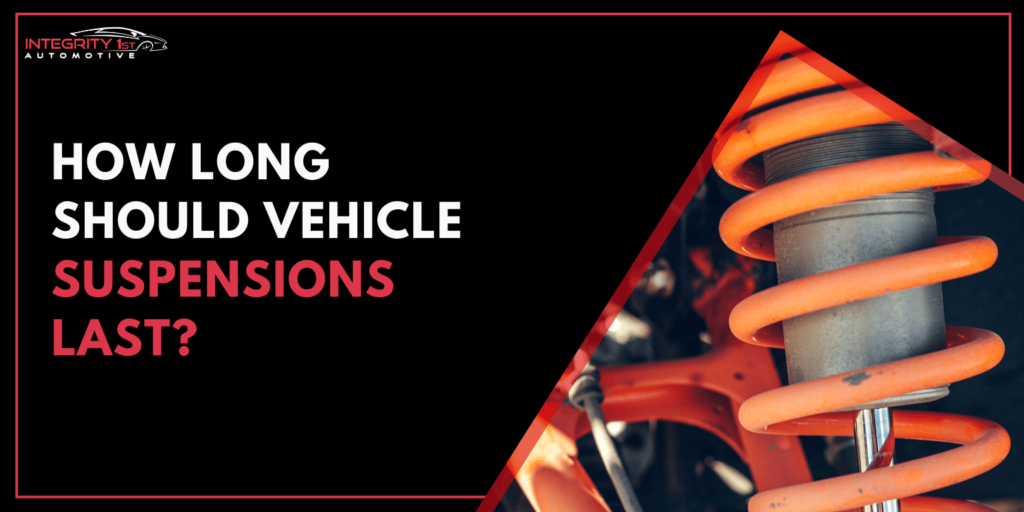Have you recently got your routine oil change, but it has turned into a terrifying experience?
Finding that dreaded oil light flashing on your dashboard can be a red signal, especially if it appears right after an oil change. Oil is the most crucial part of your vehicle’s engine, responsible for proper lubrication for moving parts. However, sometimes, the oil light suddenly appears out of nowhere after an oil change. This could be a dangerous dilemma and signal a serious problem that may damage your vehicle if ignored.
Most of the time, the oil light indicates insufficient oil pressure, resulting in overheating of the vehicle, and finally engine failure. Therefore, it’s important to diagnose the problem and save your vehicle from potential, long-term damage.
In this article, we’ll explore different reasons for oil light on after oil change and offer practical solutions.
Stay with us!
Oil Light On After Oil Change: The Top 6 Reasons
Oil light on after oil change is a critical issue that demands your attention. However, no one can help you solve this issue if the root cause isn’t diagnosed properly.
The illumination of your oil light can be due to various factors, including incorrect oil levels, dirty oil, and oil leaks, leading to severe consequences.
Therefore, identifying the cause is important to prevent engine damage
Also See: oil light comes on but oil is full
Here are 5 top, most common culprits

Incorrect Oil Level
After the routine oil change, your oil level can get too low or too high, disrupting oil pressure. This triggers the oil light and it illuminates even after an oil change.
It’s recommended to maintain the oil level as recommended by your manufacturer and always use a dipstick to check the oil level when the engine is cold.
Not Lubricating the Oil Filter
If you’ve installed a new filter and not lubricated it enough, it can hinder oil flow, causing low oil pressure.
To address this, always apply a thin layer of fresh oil to the rubber seal for proper lubrication.
Dirty Oil
Dirty or contaminated oil is unable to circulate effectively, leading to low oil pressure and triggering the oil light.
Always use a premium quality oil, approved by your manufacturer, and replace it according to the user manual.
Damaged Pressure Sensor
Sometimes, there’s nothing wrong with your oil levels, but the light is still on. It may be due to a faulty oil pressure sensor that provides inaccurate readings.
To check your oil pressure sensor, contact your mechanic for diagnosis and replacement if needed.
Oil Leak
If there’s an oil leak, you will notice drastic changes in the oil level, leading to low oil pressure. As a result, you may find your oil light still on after the oil change.
Inspect the vehicle’s engine and examine the visible leaks to address it properly.
Bad Oil Pump
A bad oil pump cannot circulate the oil efficiently, leading to low oil pressure.
A professional technician or mechanic will help diagnose this issue and offer repair as soon as possible.
Steps to Take When the Oil Light Comes On After an Oil Change
So, after your routine oil change, your oil light came on after the oil change? Sounds frustrating.
But here’s what you can do to identify the problem and take the necessary steps to protect your engine.

Check the Oil Level
As mentioned above, incorrect oil levels can trigger your oil light to illuminate inaccurately. Therefore, always ensure the oil level is within the recommended range using a dipstick.
Oil filters, when installed incorrectly, can result in oil leaks or restrictions.
Therefore, follow the guide to install the filters properly, securely tighten the filter, and seat the gasket to avoid oil leaks.
If necessary, add more oil and avoid overfilling the tank.
Inspect the Oil Filter
Faulty oil filters restrict your oil flow and lead to low oil pressure.
To cater to this, ensure proper installation and check if the filter gasket is fitted and seated correctly.
If the problem persists, replace the filter.
Examine the Oil Pressure Sensor
A malfunctioning oil pressure sensor can trigger the oil light unnecessarily.
Consult your mechanic for a proper diagnosis of your oil pressure sensor with a pressure gauge.
In case it’s not accurate, replace the sensor with professional help.
Verify the Correct Oil Type and Viscosity
The wrong oil type and viscosity can adversely affect oil pressure. Therefore, it’s important to refer to your manufacturer’s manual for correct specifications and recommended oil types and levels.
Consult a Professional Mechanic
Sometimes, diagnosing the problem can get too tricky and this is where professional help comes in handy.
An expert mechanic or technician can use specific tools and extensive knowledge to diagnose your problem and offer a viable solution based on your needs and requirements.
Blockage in the Oil Delivery System
Even though a rare occurrence, a simple blockage in the oil delivery system can disrupt the flow of oil that needs professional help, diagnosis, and maintenance of the system.
Faulty Oil Filter Installation
Oil filters, when installed incorrectly, can result in oil leaks or restrictions.
Therefore, follow the guide to install the filters properly, securely tighten the filter, and seat the gasket to avoid oil leaks.
How to Reset the Oil Light After an Oil Change?
There are a few ways you can reset the oil light after an oil change. However, first of all, it’s important to address the root cause of why your oil lights on after an oil change.
It’s because if you reset the light without diagnosing and resolving the main cause, it may lead to severe engine damage.
Here’s how to reset the oil light after an oil change.
Manual Reset
If you have an older vehicle, opt for the manual reset option.
- Without starting the engine, turn the ignition on
- Press the gas pedal to the floor thrice within 10 seconds
- Turn the ignition off
- Start the engine to check if the problem persists
OBD-II Scanner
The OBD-II Scanner option is more common in modern vehicles to reset the oil life monitor.
These devices are readily available in your local hardware shops and allow you to reset your oil light or choose a mechanic.
If, after resetting the oil light, the problem continues, it’s important to consult a qualified mechanic to diagnose the problem and fix it to prevent engine damage and potential repair costs.
Also See: why is my oil light on
Tips for Avoiding Oil Light Issues After Future Oil Changes
If you’re tired of asking, “I changed my oil but the light is still on”, here are a few tips to avoid oil light issues after your next oil change.

Use the Correct Oil Type and Viscosity
As mentioned above, the wrong oil and viscosity can adversely affect your engine performance and lead to oil light issues.
Before getting your next oil, consult your owner’s manual for the recommended oil type and viscosity.
Ensure the Proper Oil Level
Too low or too high oil levels can cause oil light issues.
It’s recommended to maintain the proper oil level and check your oil regularly using a dipstick. Add oil in the tank if needed but avoid overfilling the tank.
Install a High-Quality Oil Filter
A high-quality oil filter filters out all the contaminants and debris from your oil, enhancing the performance of your engine.
Check your manufacturer’s manual for the recommended oil filter and choose a reputable brand for more durability.
Properly Tighten the Oil Filter and Drain Plug
Ensure all the components, such as the oil filter and drain plug are properly tightened and sealed to prevent oil leaks and oil loss.
Follow your user’s manual for torque specifications for the oil filter and drain plug.
Double-Check for Leaks
After every oil change, make sure the engine and surrounding areas are free from oil leaks. If you notice any leaks, consult a mechanic to prevent oil loss and maintain optimal engine performance.
Monitor the Oil Pressure Sensor
Ensure the oil pressure sensor is working perfectly. In case of any issue with the sensor, consult with your mechanic to address the problem promptly.
Use Clean Tools and Containers
During your next oil change, make sure to use clean tools and containers to prevent any contaminants from entering the engine and mixing with the new oil.
Replace the Oil Filter with Every Oil Change
After each oil change, make sure to replace your oil filters to maintain your engine’s health.
Follow the recommended oil change intervals in your manufacturer’s guide and replace the filters accordingly.
Follow a Regular Maintenance Schedule
Your oil-related problems, including oil light issues, can be tackled by maintaining a proper maintenance schedule.
Keep Records of Oil Changes
Always keep track of your oil changes to monitor the vehicle’s maintenance, and history. Also, it helps you to identify any potential oil-related issues early on.
Visit Integrity 1st Automotive Today
Are you still worried about that pesky oil light still on after the oil change? Fret not!
Our skilled team of industry experts at 1st Automotive Today will diagnose the root cause of your problem and provide practical, effective solutions that work.
Whether you’re planning for a routine oil change or complex engine repairs, you can count on us for all of your engine needs. Our professional services ensure you receive comprehensive services and your vehicles run smoothly and efficiently without causing you much trouble.
So, are you ready for your next oil change? Gear up and schedule a call with us!
Conclusion
How many times have you heard, “Just got an oil change and oil is low”? We understand that it can be frustrating to deal with oil light issues, especially if the root cause is still unknown.
According to professionals, there are a few reasons why is your oil light on after an oil change, including:
- Dirty oil
- Faulty oil pressure sensor
- Blockage in the oil delivery system and others.
However, there are easy ways to deal with these problems by yourself or by hiring a professional. Most importantly, you should know how to reset the oil light after every oil change to avoid these issues.
For this, you need to follow the manual option (for old cars) or use an OBD-II Scanner (for modern cars). However, if the problem persists, it’s better to call a professional to diagnose the problem.
At Integrity 1st Automation, we have answers to all of your problems, engine issues, oil leak problems, oil change queries, and much more. Schedule a call to discuss your problem today.
FAQ
Can I Still Drive With The Oil Change Light On?
No, it’s dangerous to drive with the oil change light on.
What Happens If You Don’t Reset The Oil Light?
If you do not reset the oil light, it’ll remind you that an oil change is overdue, even if your oil tank is full.
How Long Does It Take For An Oil Light To Go Off?
As soon as the oil gallery reaches the interior of the filter, the oil light should go off.
Does The Oil Maintenance Light Reset Itself?
No, you need to reset it through a manual way or by using an OBD-II Scanner.




